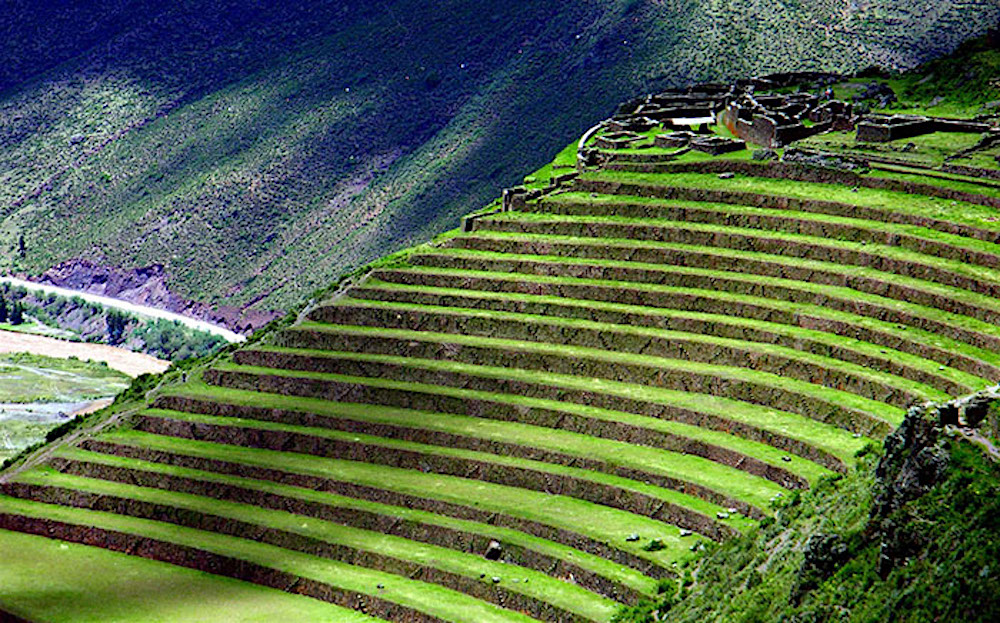Humans began to live in urban settlements about 7 thousand years ago. As humans continued to evolve over the millennia, so too did our cities. Now, our cities are about to change again — and they’re going to look more like ancient Machu Picchu than the gleaming towers of glass and steel we have today.
As any urban dweller can tell you, the one thing that’s constant in city life is change. Buildings rise up and are torn down; parks bloom out of old train tracks; swimming pools become ice rinks that become arcades and then turn into Whole Foods. For this reason, urban historian Spiro Kostof calls the city a “process.” Cities change with the peoples that live in them, but they are also a repository of history. Even as we relentlessly build new structures, we prefer to remain in these old places where we can live in what’s left of cities and cultures that are hundreds or even thousands of years gone.
Early Cities
Some of the earliest cities, in regions that are now called Turkey, Syria and Peru, were probably built at roughly the same time that humans were developing agriculture. As anthropologist Elizabeth Stone has found, many of the earliest city jobs probably involved farming. In the Mesopotamian cities she studies, people worked in orchards and farms just outside the city walls. These farmers built their homes from mud and brick, and as buildings crumbled into dust, they built new ones on top of the old.
As a result, many of these early cities eroded into mounds of earth over time. But even in their heyday, they would have probably looked a bit like clay boxes atop an earthen mound, surrounded by the plants, trees, and dairy animals that their inhabitants cultivated.
This image was lost some time after publication, but you can still view it here.
Like the people of the Middle East, the groups who later became the Inca in South America also built cities as an extension of their farms. Living as they did in a mountainous, coastal region, the Inca’s forebears and the Inca themselves had to create agricultural technologies on nearly vertical landscapes. They learned which crops could thrive in valleys, and which would survive in terraced farms that looked like vast steps cut into the slopes of their mountain cities. And they experimented with elaborate irrigation systems that relied on gravity to bring water to their farms.

Is the City Evolving Too Fast?
Over time, many early farm cities grew into political city-states, were swallowed by nations, and eventually became powerhouses for the nineteenth century industrial revolution. Of course many early cities simply died out, and new cities were built that suited emerging forms of human social organization. For most of human history, however, the city was an aberration: the majority of people lived in villages and other small communities.
All that changed in the twenty-first century. In 1800, according to estimates made by the UN, only 3 percent of the world’s population lived in cities. Today, more than half the world’s population lives in urban areas, and by 2050 the UN estimates that will be more like 67 percent. In developed countries, that percentage will be higher.
Homo sapiens is evolving into an urban species. Already, our genomes have been transformed by one development associated with city growth: agriculture. The genes that allow adults to process the lactose in milk from farm animals have spread like wildfire through the population in under 10,000 years — probably because of the tremendous survival advantage in being able to eat the products of animal husbandry.
Still, city life sometimes feels much too crazy and complex for simple hominins like ourselves. Have our own urban creations evolved more quickly than we have? The answer is no. As evolutionary biologist Marlene Zuk has argued:
Neither we nor any other species have ever been a seamless match with the environment. Instead, our adaptation is more like a broken zipper, with some teeth that align and others that gape apart.
Just because our urban environments don’t always feel perfectly comfortable doesn’t mean they aren’t also part of our our ongoing process of adaptation. As I said earlier, the city reflects both human history and our present state. It’s a process, always transforming, but always reflecting who humans are — and who we are becoming.
The Cities of Tomorrow
Now that the majority of humans live in cities, we’re going to be confronting a new set of problems in urban life. For one thing, natural disasters in cities can cause much greater numbers of fatalities than in sparse, rural communities. So the cities of tomorrow will need to be robust against many kinds of disaster, from earthquakes and floods, to radiation bombardment. It’s possible that many cities will built partly under ground, and partly under water. They might even be built inside a single building surrounded by farms. Not only will such structures allow us to conserve space, but layers of earth and water are excellent protection against radiation.
https://io9.gizmodo.com/cities-are-the-future-of-human-evolution-493082761
